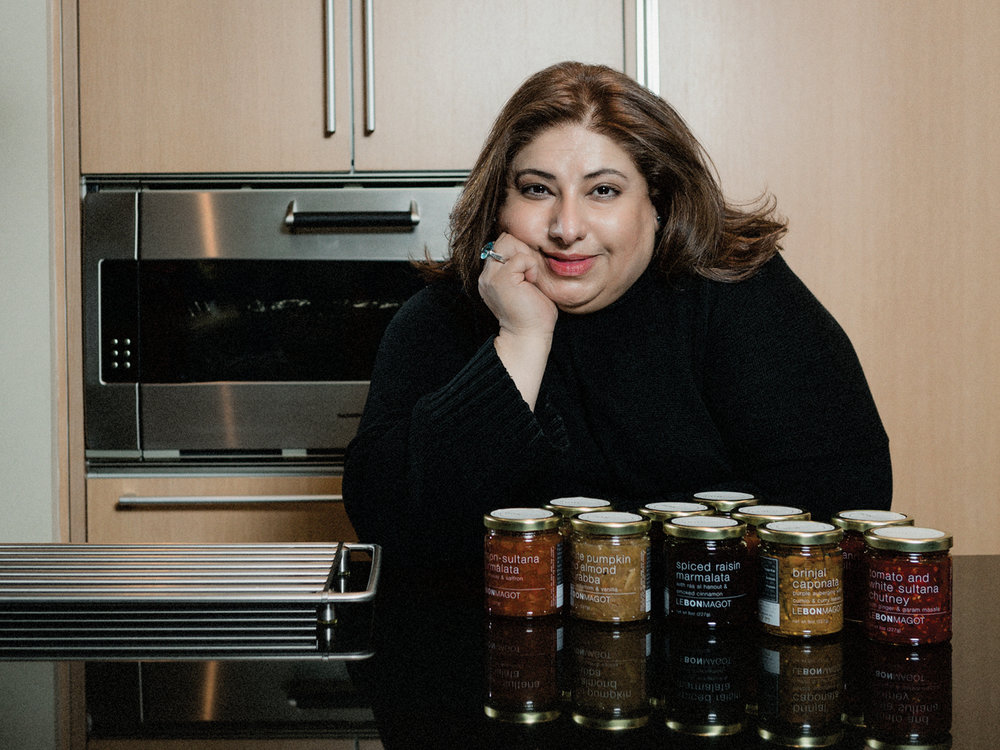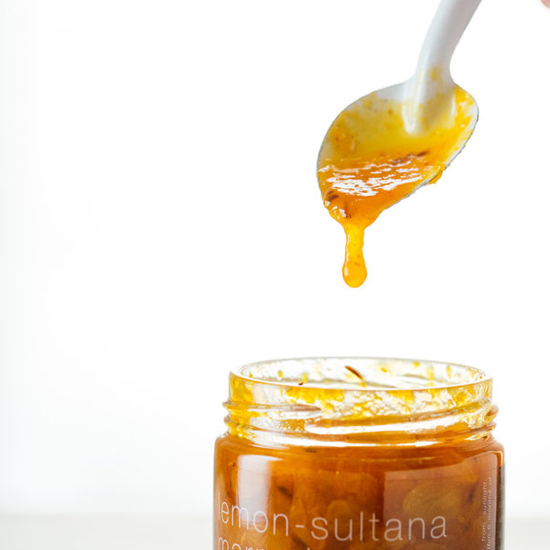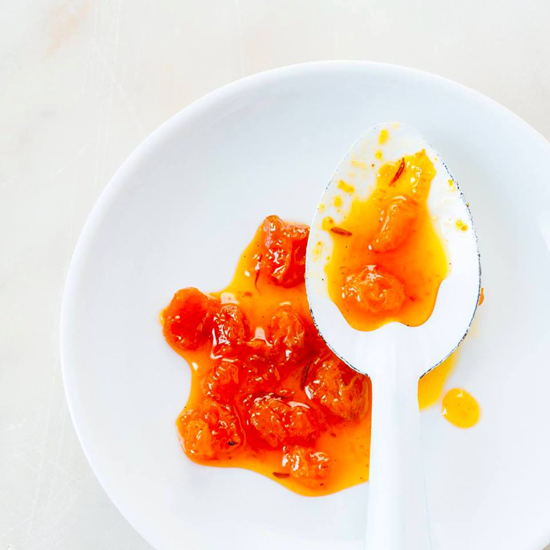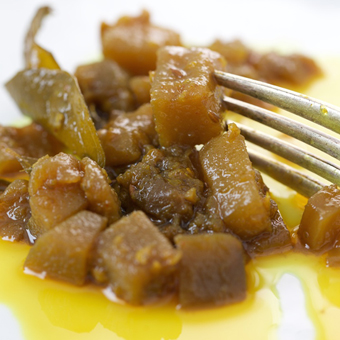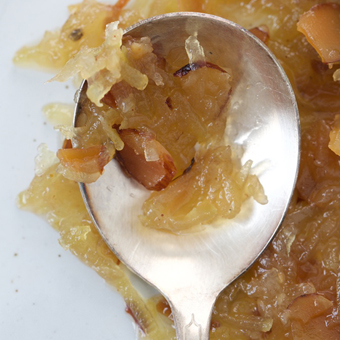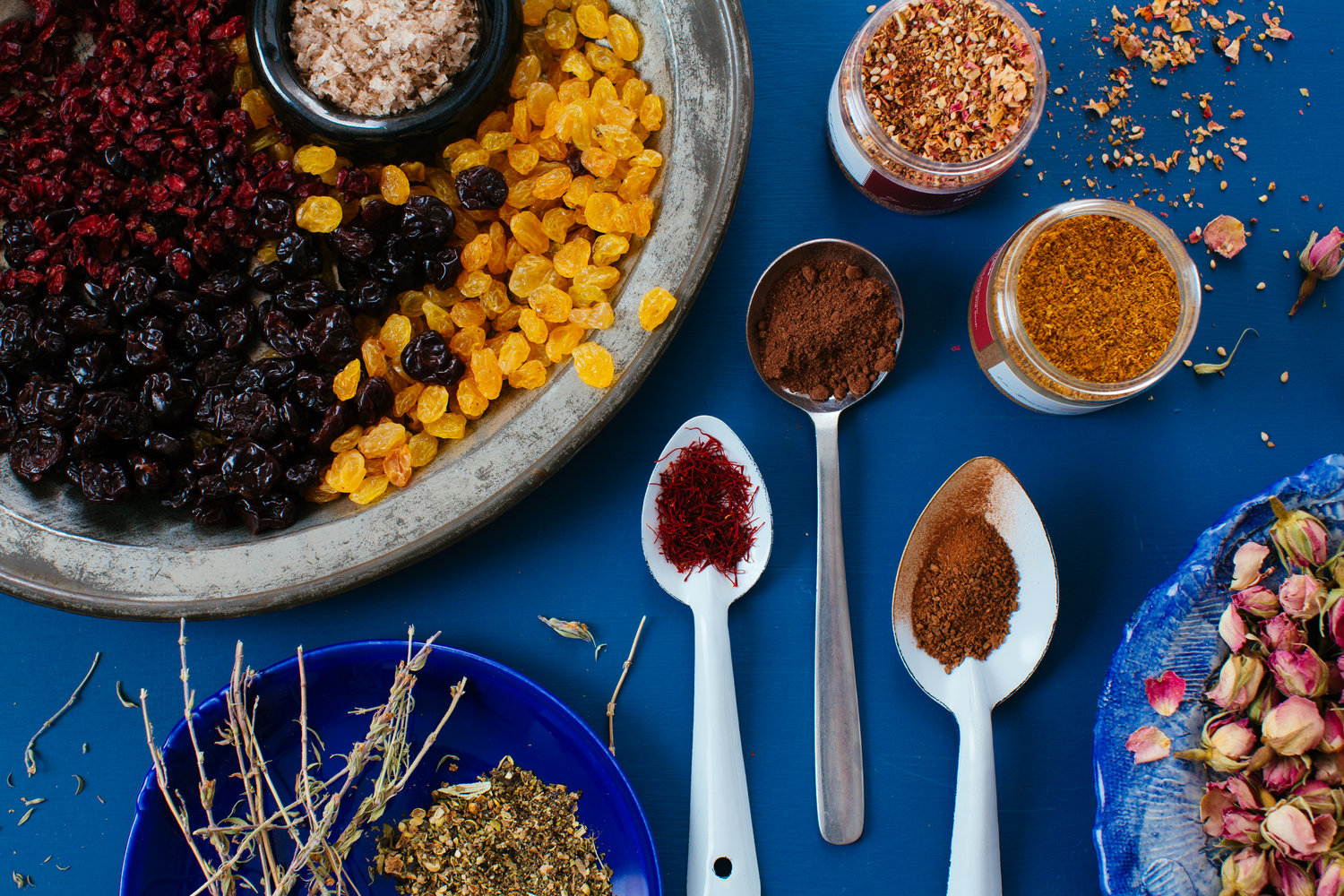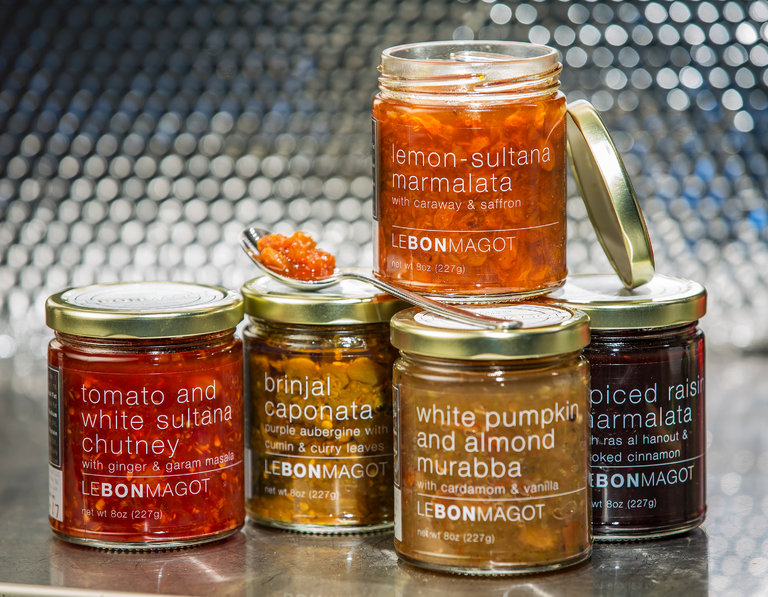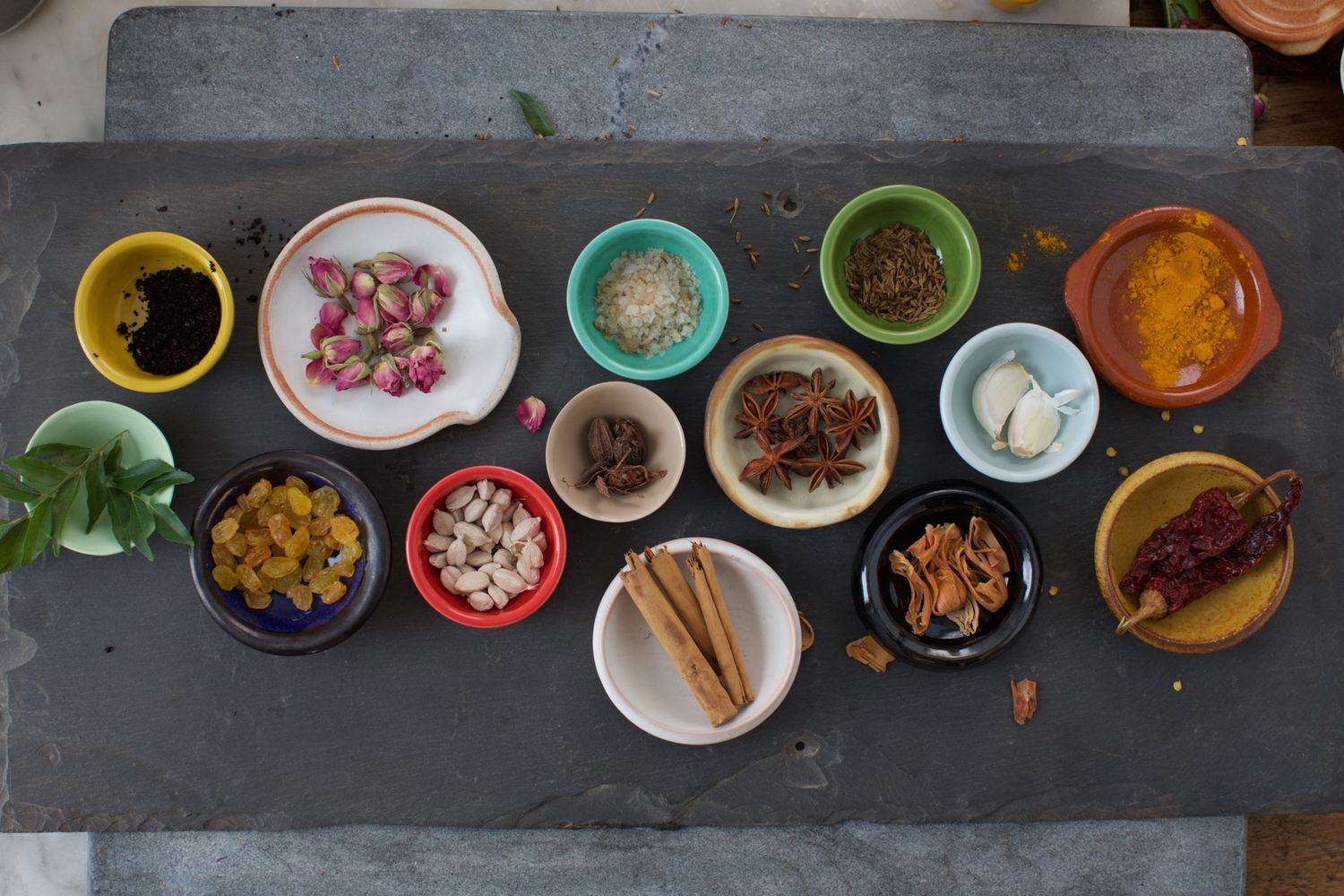Founder of Le Bon Magot®, Naomi Mobed, was raised a culinary citizen of the world. In every jar of her whole fruit jams and chutneys, generations of global influence and family tradition are sealed. You’ll taste heritage and experiences from Africa, the Middle East, South Asia . . . and even Bartlesville, Oklahoma.
Global Influences
“When my Pakistani family lived for several years in Bartlesville, the spices that deliver the flavors of home were not readily available. Living there was an overall positive experience; it was an affluent community—well-funded and well-endowed, as it was anchored by the oil industry—but it was narrow in its diversity and availability. I have vivid memories of my mother buying Indian spices out of people’s garages. When someone from the community traveled back home, one or two suitcases were always dedicated to spices. When the spices that recipes depend on are not on hand, you do what you can and improvise. Since our family was constantly moving, my mother was tweaking and changing our old family recipes passed down from aunts, grandmothers, great aunts—all the women of our family—based on accessible ingredients. So traditional recipes transformed and gradually took on the influences of the countries in which we were living.”
Launched in 2015, Le Bon Magot (mă-gō′), or “the hidden treasure,” is the culmination of Naomi’s family’s culinary journey. Discover Binjal Caponata (purple aubergine, cumin, and curry leaves), Tomato and White Sultana Chutney (with ginger and garam masala), White Pumpkin and Almond Murabba (with cardamom and vanilla), Lemon-Sultana Marmalata (with caraway & saffron), and Spiced Raisin Marmalata (with Ras al Hanout and smoked cinnamon).
To hear Naomi speak about the dreaming and tasting and structuring of these recipes is to listen to music (you say tomato, Naomi says tomato), and to taste her creations is to regard works of art that transport you into the life of their creator.
“All the jams and chutneys play on notes that are natural in terms of pairings. Most of the recipes are rooted in family tradition and two are born of my own imagination and experience—the Lemon-Sultana Marmalata with Caraway & Saffron, and the Spiced Raisin Marmalata with Ras al Hanout & Smoked Cinnamon. One represents sunrise, with the color of the morning sun, and the other sunset, a rich mahogany. Each has a distinctively floral taste—the crocus and the rose are shown in their glory. They rely on centuries-old traditions of fruit preservation, but the sugars are not as prominent with the spice blends on full display. The Spiced Raisin Marmalata, or marmalade, transports you down the Silk Road, thru musky, oud-scented kasbahs and bustling markets. Clouds of spices linger in the air as bright tapestries shroud stuccoed doorways. The Lemon-Sultana, on the other hand, is a bright, sunny marmalade with floral depth coming from the saffron, liquorice notes from the caraway, and citrus from both fresh and desiccated lemon zest. Combined with crystalized honey in a pool of verjus, this syrupy blend is summer in a jar.”
Hidden Treasures, Shared
Le Bon Magot® was launched on a challenge.
Naomi shared, “My mother and friends challenged me when I moved back to America after living overseas for 25 years. When I returned, my mom asked, ‘Okay, so what are you going to do now?’ I had a small consulting company specializing in the Middle East and African markets, so I was already in finance, building, developing, and evolving financial services products. Of course, these are vapor—you aren’t manufacturing anything physical. I’d talked about being involved in the restaurant industry for much of my life. In fact, so much so that for me it was a choice between culinary school and grad school, and at the time, I chose grad school. As we talked through the possibilities for where my career could take me, Mom said, ‘You either have to do this or shut up about it.’ So the gauntlet was thrown, and I knew my next venture had to be in the culinary world. The question was ‘what?’”
“A restaurant seemed the obvious answer. But, bricks-and-mortar “locates you and I wanted more geographic flexibility. It seemed like the ready-foods side of the industry would allow me to keep my personal footprint both here and in Europe, so that was a huge advantage. We don’t as a family tend to buy a lot of ready products, and I considered why that was. I knew for a fact that what we generally find in a jar or a box just doesn’t same as if we made it at home—the texture and flavor profiles are not there. So, along with Mom, I embarked on a mission to seal and jar the same quality and taste that we produce in our home kitchen, to our diners seeking luxury ethnic foods and beyond.”
“At a practical level, I then realized that I’d have to transition from the vapor of selling and structuring financial products to the very tangible, physical process of making widgets. And, widgets or products that could stand the test of time on a pantry shelf. These recipes that were so historically successful are so in part because they are inherently shelf-stable, which puts time on the producer’s side. And coupling that with my return to the US and learning how much the American palate has changed, the explosion of flavors, the embrace of spices, and the demand for thoughtfully made foods . . . the time seemed ripe culturally and it just made sense personally.”
Flavors that Impress and Last
Le Bon Magot® became an immediate hit for all who tasted it, and is growing exponentially. “Amidst the current political climate, there is a somewhat unexpected countermovement for immigrant, women-owned businesses. This has been a boon for our nascent company. Also, I didn’t previously fully appreciate the essential nature of images in communicating our recipes and tastes to customers. A wonderful young student from Stanford who has been our intern awakened me to the possibilities of Instagram, and due to two images alone—one by a restaurant chef incorporating our Brinjal Caponata into his recipe—our Insta following more than doubled. This fascinated me and helped me to understand the desires of a visual culture and customer base.”
There’s more yet to understanding what sets Le Bon Magot® apart from other producers of chutneys and jams. Le Bon Magot® takes seriously its responsibility in the global supply chain, recognizing that its choices and standards, as part of a broader community of artisan producers, can influence the way that food is grown, processed, marketed, and regulated around the world.
Consequently, their recipes use natural ingredients, including high-quality and seasonal fresh produce that is never frozen. Every jar is hand-made, hand-packaged, hand-sealed, and hand-labeled in the US, relying on preservative-free, all-natural preservation techniques.
On this note, Naomi adds, “Fresh produce is difficult from a supply chain perspective, but we refuse to yield to the challenge by using frozen or lesser quality ingredients. We don’t even use lemon juice that comes in a bottle—we squeeze every one of our lemons. As well as recognizing freshness in the taste, you can see the results of this process in the nutritionals. We don’t even use vitamin C or washes on our fruits and vegetables. Even the sugars in the products—and I don’t shy from the fact that they do contain sugars—are quite low compared to others on the market. Also, you are getting a lot of dense produce material. Often, you’ll see a 50/40 ratio of jam to syrup, but ours is much more dense, and you can see that even looking at pictures of our jars online. In an 8 oz jar, you’ll discover an abundant amount of fruit.”
Abundant fruit, fruitful heritage. The Savory Pantry is proud to bring Le Bon Magot® to your table.

